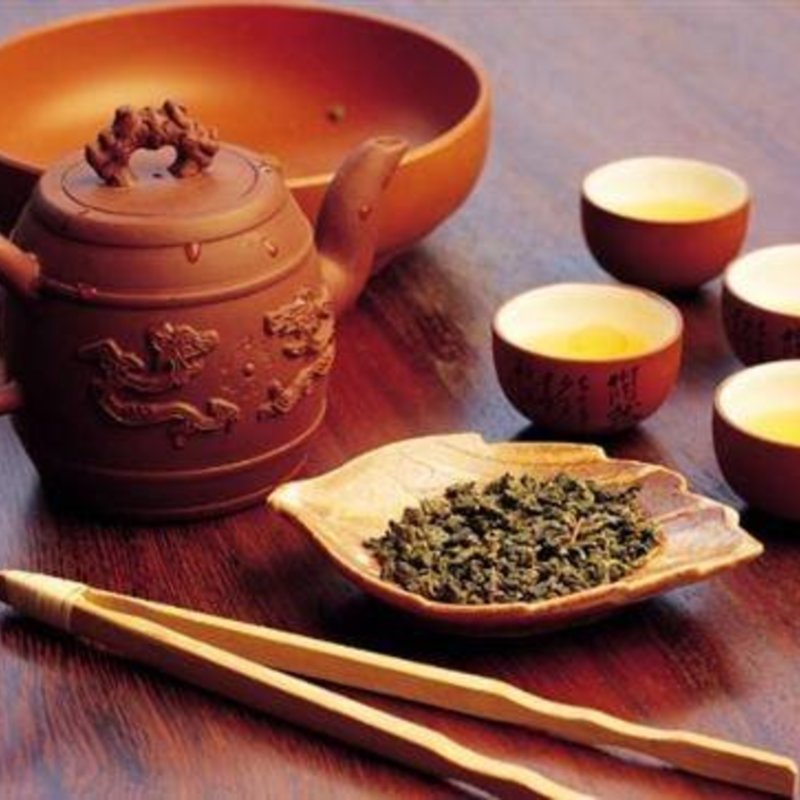Tea Drinking
Dublin Core
Title
Tea Drinking
Subject
Chinese Tea Culture
The art of tea
Tea drinking
The art of tea
Tea drinking
Description
Tea is a basic necessity in the life of the Chinese people. To eat and to drink is a matter repeated with regularity every day. Tea-drinking in China has undergone four phases of development.
Primitive men picked tea leaves for food. This practice lasted well into the Spring and Autumn Period. Later on the medicinal value of tea was discovered, and tea water was used to cure diseases. This period may be defined as the first phase of development.
From Pre-Qin Period to Eastern and Western Han dynasties, tea became a beverage. During this period, tea was made with millet and other condiments and was boiled to a porridge-like consistency. This mode of tea-drinking is termed "soup-drinking" and is still popular among some minority nationalities. This represents the second phase.
To grind leaves and leave them to draw in boiling water marks the third phase of tea-drinking. This way of drinking originated in the Three Kingdom Period, was popularized in the Tang Dynasty, and became the prevailing method of tea-drinking in the Song Dynasty. This method is the same as that used in making brick-tea. Unlike the present-day practice, however, such condiments as onion, ginger and lemon had to be added. This phase, in fact, represents a transition to the fourth stage, characterized by pouring boiling water over tea leaves.
This concoction originated in the Tang Dynasty. A new tea-processing technology was invented during this period, which was known as roasting and baking. This method involved picking tender, green leaves in spring and, after proper roasting and baking, making them into whole separate tea leaves. When drinking, one just poured boiling water over the leaves without grinding them. This started a revolution in tea-drinking, initiating the fourth phase of development. During the Song Dynasty, teas made from ground and whole leaves were equally popular. Since the Ming and Qing Dynasties, however, the latter has become the predominant method of tea-drinking in China.
Primitive men picked tea leaves for food. This practice lasted well into the Spring and Autumn Period. Later on the medicinal value of tea was discovered, and tea water was used to cure diseases. This period may be defined as the first phase of development.
From Pre-Qin Period to Eastern and Western Han dynasties, tea became a beverage. During this period, tea was made with millet and other condiments and was boiled to a porridge-like consistency. This mode of tea-drinking is termed "soup-drinking" and is still popular among some minority nationalities. This represents the second phase.
To grind leaves and leave them to draw in boiling water marks the third phase of tea-drinking. This way of drinking originated in the Three Kingdom Period, was popularized in the Tang Dynasty, and became the prevailing method of tea-drinking in the Song Dynasty. This method is the same as that used in making brick-tea. Unlike the present-day practice, however, such condiments as onion, ginger and lemon had to be added. This phase, in fact, represents a transition to the fourth stage, characterized by pouring boiling water over tea leaves.
This concoction originated in the Tang Dynasty. A new tea-processing technology was invented during this period, which was known as roasting and baking. This method involved picking tender, green leaves in spring and, after proper roasting and baking, making them into whole separate tea leaves. When drinking, one just poured boiling water over the leaves without grinding them. This started a revolution in tea-drinking, initiating the fourth phase of development. During the Song Dynasty, teas made from ground and whole leaves were equally popular. Since the Ming and Qing Dynasties, however, the latter has become the predominant method of tea-drinking in China.
Type
Art
Coverage
Public
References
Xiousong, L. (1993). Chinese tea culture. The Journal of Popular Culture, 27(2), 75-90.
Embed
Copy the code below into your web page
Item Relations
This item has no relations.
IIIF Manifest
- Date Added
- December 2, 2018
- Collection
- Chinese Tea Culture
- Citation
- “Tea Drinking,” CCCH9051 Group 44, accessed October 7, 2025, https://learning.hku.hk/ccch9051/group-44/items/show/27.
